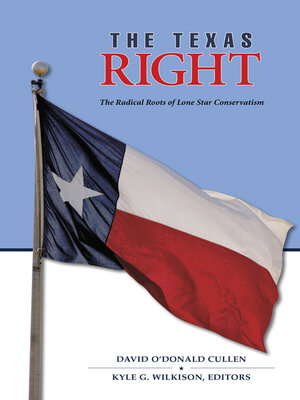The Texas Right
ebook ∣ The Radical Roots of Lone Star Conservatism · Elma Dill Russell Spencer Series in the West and Southwest
By David O'Donald Cullen

Sign up to save your library
With an OverDrive account, you can save your favorite libraries for at-a-glance information about availability. Find out more about OverDrive accounts.
Find this title in Libby, the library reading app by OverDrive.



Search for a digital library with this title
Title found at these libraries:
| Library Name | Distance |
|---|---|
| Loading... |
In The Texas Right: The Radical Roots of Lone Star Conservatism, some of our most accomplished and readable historians push the origins of present-day Texas conservatism back to the decade preceding the twentieth century. They illuminate the initial factors that began moving Texas to the far right, even before the arrival of the New Deal.
By demonstrating that Texas politics foreshadowed the partisan realignment of the erstwhile Solid South, the studies in this book challenge the traditional narrative that emphasizes the right-wing critique of modern America voiced by, among others, radical conservatives of the state's Democratic Party, beginning in the 1930s. As the contributors show, it is impossible to understand the Jeffersonian Democrats of 1936, the Texas Regular movement of 1944, the Dixiecrat Party of 1948, the Shivercrats of the 1950s, state members of the John Birch Society, Texas members of Young Americans for Freedom, Reagan Democrats, and most recently, even, the Tea Party movement without first understanding the underlying impulses that produced their formation.
By demonstrating that Texas politics foreshadowed the partisan realignment of the erstwhile Solid South, the studies in this book challenge the traditional narrative that emphasizes the right-wing critique of modern America voiced by, among others, radical conservatives of the state's Democratic Party, beginning in the 1930s. As the contributors show, it is impossible to understand the Jeffersonian Democrats of 1936, the Texas Regular movement of 1944, the Dixiecrat Party of 1948, the Shivercrats of the 1950s, state members of the John Birch Society, Texas members of Young Americans for Freedom, Reagan Democrats, and most recently, even, the Tea Party movement without first understanding the underlying impulses that produced their formation.







